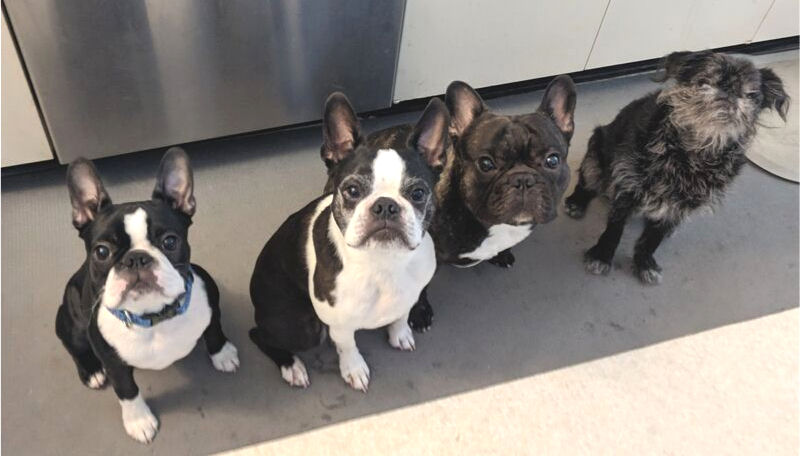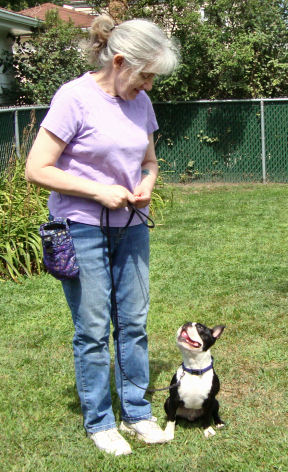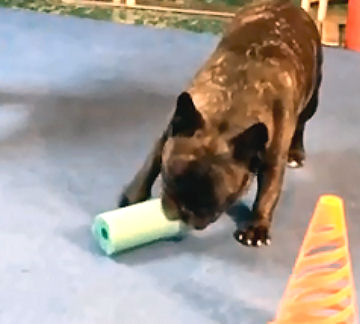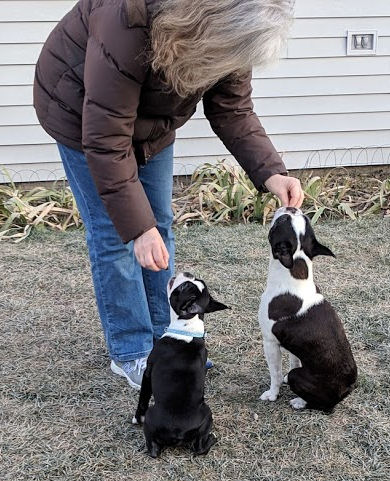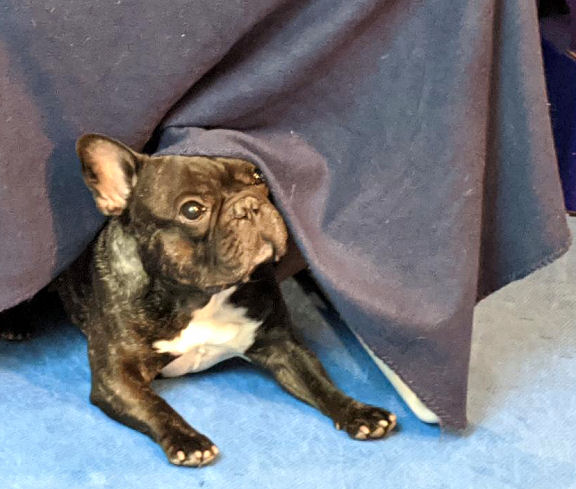
After you’ve been playing training games with your dog for a while, you might have trouble coming up with new ideas. But you don’t always have to come up with something new. You can take your dog training games to the next level by putting them together.
Inspirational dog training
We’ve always loved dogs. But getting hooked on the training part came much later. Dogs are great, adorable, cuddly companions and friends. But the partnership truly blossoms through training. One of the very first, inspirational dog/people partnerships we saw was Carolyn Scott and her Golden Retriever Rookie:
That video is from 2006, competing in “Dog Freestyle,” or “Dog Dancing.” When you watch the video, you’ll see that nothing Rookie does is beyond your dog’s ability: spins, heeling, back up, around, etc. Fran is even working on the “Twine” behavior with Simon, where he “twines” between her legs as she walks.
Only limit is imagination (and thumbs)
If you search for “dog dancing” or “dog freestyle” you’ll see tons of videos from around the world. Routines that people have come up with are truly amazing. Some use props, others, like Scott & Rookie”s routine, don’t. The only limit is what dogs are actually capable of manipulating without having thumbs.
If you and your dog have mastered a couple of behaviors with 2-Minute Training games – how about putting them together? Then you’ll have a whole new trick and possibly the start of a dog dancing routine. Hope and Torque’s trick “Troll Under The Bridge” is actually three behaviors strung together: Come, Circle to Middle, and Back Up.
Could it be a component of a dog dancing routine? Absolutely!
Dog dancing, or freestyle, is the precursor to the Elite Performer, or top level of AKC’s Trick Dog program. And you can still earn any level of Trick Dog title virtually. It’s a great way to show off your dog’s skills.
Use music for inspiration
If you have a favorite song, why not try to choreograph something for you and your dog? A complete song would require an enormous amount of planning, endurance, and training. But a 15-second snippet is both doable and fun. You already know how much training gets done in just two minutes. 15 seconds would definitely let you string together at least three to five behaviors.
It’s another way to have fun with your dog. What’s better than dancing the night away?

